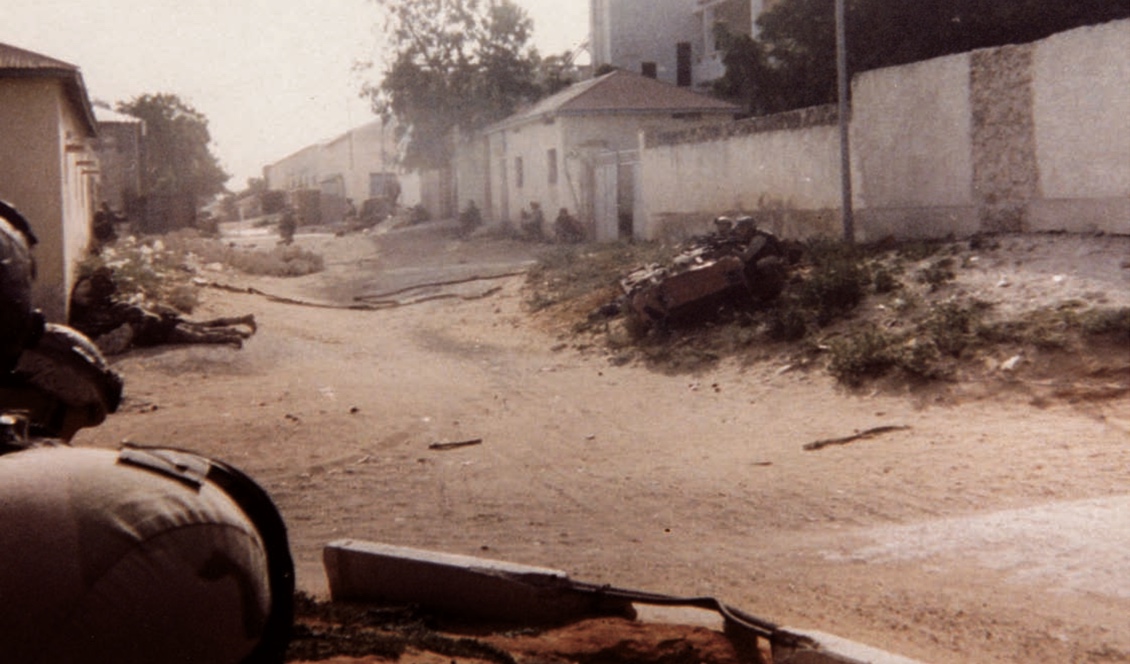Members of Task Force Ranger under fire in Somalia. 3 October 1993 Operation Code Irene — the Battle of Mogadishu. US Army Rangers Photo.
Thirty years ago, on 3 October 1993, a US-led military operation in the capital city Somalia turned into a deadly firefight that shocked the world. It involved US special forces, supported by UN peacekeepers, who attempted to capture two top lieutenants of the Somali warlord Mohamed Farrah Aidid, who was leading a violent resistance against the UN-backed transitional government.
The US forces launched a surprise raid on a meeting of Aidid’s militia leaders in south Mogadishu, using Black Hawk helicopters and ground troops. The raid was part of Operation Gothic Serpent, a US-led mission to arrest Aidid and end his attacks on UN personnel and humanitarian aid workers. However, the operation quickly turned into a disaster when two of the helicopters were shot down by rocket-propelled grenades, and the US soldiers found themselves surrounded by thousands of hostile Somalis armed with rifles, machine guns, and rocket launchers.
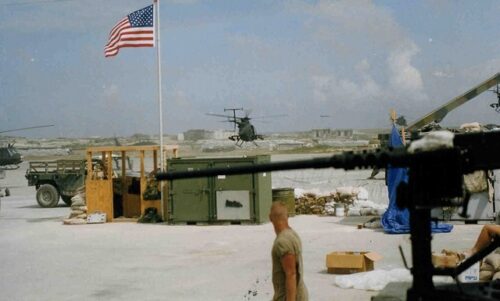
The US forces had to fight their way through the narrow streets and alleys of Mogadishu, facing intense fire and fierce hand-to-hand combat, while waiting for reinforcements and rescue. The battle lasted for more than 15 hours, and resulted in the deaths of 18 US soldiers, 73 wounded, and one captured.
Among the dead were two Delta Force snipers, Gary Gordon and Randy Shughart, who were posthumously awarded the Medal of Honor for their heroic actions in defending one of the downed helicopter pilots. Gordon and Shughart were providing sniper cover from another helicopter when they saw that the second crash site was overrun by Somali fighters. They repeatedly requested permission to land near the site and protect the four wounded crew members from the ground.
Delta insertion.
After being denied twice, they finally got approval and were inserted about 100 meters from the crash site. They fought their way to the helicopter, armed only with their sniper rifles and pistols, and found only one survivor, pilot Michael Durant. They pulled him out of the wreckage and set up a defensive perimeter around him. They requested immediate extraction, but it was not possible due to heavy fire. They fought off waves of Somali attackers for nearly an hour until they ran out of ammunition.
Gordon was killed first after being shot in the head. Shughart picked up Gordon’s rifle and gave it to Durant, telling him to use it if necessary. Shughart then continued to fight with his pistol until he was also killed by multiple gunshots. Durant was taken prisoner by the Somalis but was later released after 11 days of captivity.
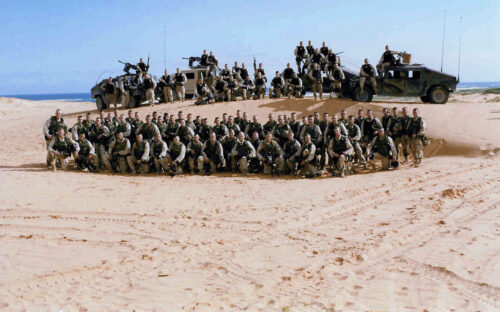
The Somali casualties were estimated to be between 500 and 1,000 killed, and thousands more wounded. The battle was a major setback for the US and UN efforts to stabilize Somalia, and sparked a public outcry in the US over the involvement of American troops in a foreign civil war.
The battle also affected US foreign policy in several ways. It led to a reassessment of America’s role in the world, especially in Africa, where it became more reluctant to intervene militarily or diplomatically in complex conflicts. It also prompted a revision of the presidential directive on peacekeeping operations, which established stricter criteria for US participation in such missions. It also exposed the weaknesses and limitations of US special operations forces in urban warfare and prompted them to learn and adapt from their mistakes.
The role of UN peacekeepers in Somalia was initially to provide humanitarian relief and monitor a ceasefire agreement between rival factions that had plunged the country into civil war and famine since 1991. The first UN mission in Somalia (UNOSOM I) was established in April 1992 with a mandate to secure trade routes for food delivery, protect relief workers, assist in disarmament and reconciliation efforts, and support local authorities. However, UNOSOM I faced resistance from some warlords who saw it as a threat to their power base, especially Aidid who controlled most of Mogadishu.
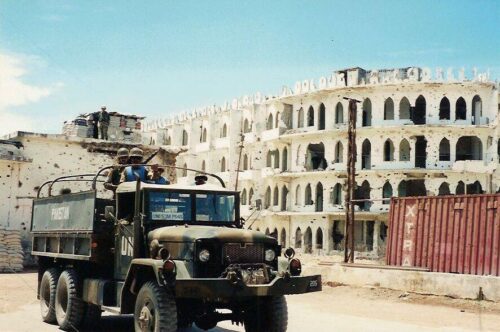
The US-led intervention force in Somalia was authorized by the United Nations Security Council on 3 December 1992, following an escalation of violence that hampered relief operations. Resolution 794 welcomed the United States offer to help create a secure environment for humanitarian efforts in Somalia, and authorized the use of “all necessary means” to achieve this objective. The intervention force was known as Unified Task Force (UNITAF), and consisted of troops from various countries, including Australia, Canada, France, Italy, Pakistan, Saudi Arabia, Turkey, United Kingdom, Zimbabwe, among others.
UNITAF took over security responsibilities from UNOSOM I in December 1992, and secured most of southern Somalia for humanitarian aid distribution. In March 1993, the UN took over again with a second mission (UNOSOM II) that had an expanded mandate to rebuild Somalia’s political institutions, disarm militias, train police forces, organize elections, and promote human rights.
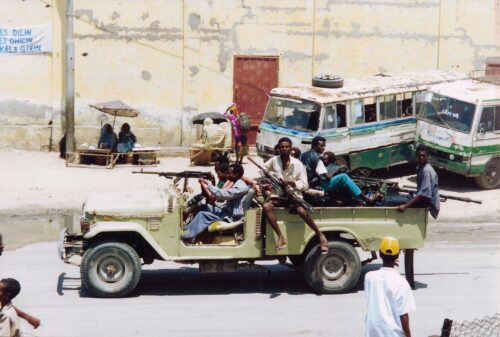
UNOSOM II also included a large contingent of peacekeeping troops from various countries, including Pakistan, Malaysia, Italy, Belgium, Canada, and Australia. UNOSOM II was supposed to cooperate with Somali factions to achieve these goals, but soon found itself in conflict with Aidid’s militia, which refused to disarm and attacked UN personnel and facilities. The US special forces were deployed as part of UNOSOM II to capture Aidid and his lieutenants, leading to the Battle of Mogadishu.
After the battle, the UN peacekeepers continued their mission in Somalia, but with reduced support from the US and other countries. They faced frequent attacks from Aidid’s militia and other armed groups, as well as clan rivalries, banditry, and lawlessness. They also struggled to implement the political and economic reforms that were envisioned by the UN mandate. By 1995, the UN peacekeepers had failed to achieve any lasting peace or stability in Somalia and were widely seen as ineffective and unpopular by the Somali population. The UN Security Council decided to withdraw UNOSOM II by March 1995, ending the UN intervention in Somalia.
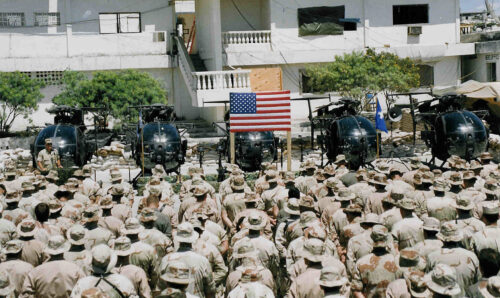
The battle was later depicted in the book and film Black Hawk Down, which made it one of the most well-known events in modern military history.
*The views and opinions expressed on this website are solely those of the original authors and contributors. These views and opinions do not necessarily represent those of Spotter Up Magazine, the administrative staff, and/or any/all contributors to this site.
